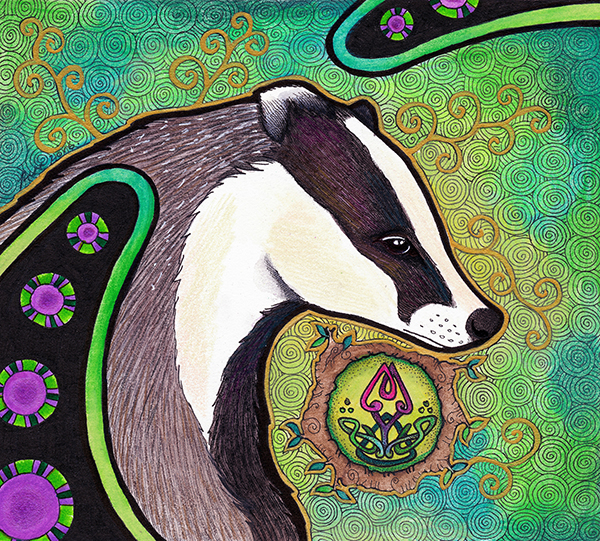European Badger – Earth Dog
‘Well! Which version of me do you want, anyway? The gruff, stubborn creature you met on TV once? The soft family creature that buries its dead that you read about in an article? I hope you’re strong enough to learn the truth. First things first, we’ll get comfortable in my home, do you have a den of your own? You should! What a terrible oversight, if you don’t. And do you know what it is to be steadfast? To value generational wisdom? Do you care for what you pass onto the world and into nature? Do you know what it means to be a warrior? Or how many kinds of warrior there are?
‘It seems like you have a lot to learn, and perhaps it seems overwhelming, but this is why we have our dens in the first place. To rest in the dark, amongst each other, warm and close. Strong and fierce if need be, but loyal and devoted too. I suppose, if you want to spend time with me, you’d best be ready for a long-term friend, I am no fair-weather fellow!’
Keywords:
Earth dog, possessing a temper when stirred, tolerance, home sweet home, warrior energy, warrior mythologies, the warrior, strength, loyalty, devotion, staying close to safe spaces, developing tolerance and acceptance of others, steadfastness, generational wisdom, passing knowledge to your progeny, valuing heirlooms, inverting a situation to understand its wisdom, inversion, shapeshifting, local folklore and wisdom, a persistent relationship to pop culture.
General Description:
The European badger is a social, burrowing mammal found throughout Europe. They are powerfully built, with short, massive limbs and elongated, strong claws for digging, their jaw is strong enough to crush human bone. They are known for their distinctive striped appearance, and lives in setts, elaborate, complex dens located near scratching trees which are passed on from generation to generation. Bedding is collected throughout the year, and old bedding is discarded, they are fastidiously clean, and use communal latrines to dispose of their waste. They are omnivores, and like many species of bear, the least carnivorous members of the order Carnivora; they will turn rabbits and hedgehogs inside out and leave the pelts after consumption. Earthworms are a significant part of their diet. They have acute smell, monochromatic eyesight more attuned to movement, and hearing like that of humans. They are crepuscular and nocturnal. Depending on the region, badgers will sometimes aestivate in winter.
The European badger has been documented burying dead family members. They can be aggressive when provoked (which was exploited in badger-baiting), but are generally peaceful and share their burrows with other species. They use their scent glands to communicate, and are quite vocal; they will growl, bark, whicker and ‘kekker.’ They are the most social of all the badgers, grouping in numbers between 6 and 23. They use well-worn paths, mark their territory and are tolerant of each other. They will groom each other with their claws and teeth. They are a polygynous species and when grouping, only dominant females tend to breed. They are sometimes predated upon by bears, wolves, lynxes, dogs and humans, and because of parasitic spread (like bovine tuberculosis), they can be a threat to livestock. In Irish mythology badgers are portrayed as shapeshifters, in German folklore they are portrayed as a peace-loving, wary Philistine. They are frequently featured in contemporary culture, such as gruff, well-meaninged Mr. Badger in Kenneth Graham’s The Wind in the Willows, and those fierce warrior badgers featured in the Mossflower works of Brian Jacques. They are also the symbol for Hufflepuff in the Harry Potter series. Badger hair has been used for making brushes and sporrans, the skin for shagreen, and pelts for clothing.